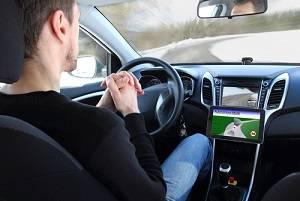The Dilemma of Self-Driving Cars
 Earlier this year, legislation proposed a $4 billion investment into getting self-driving cars. However, the recent death of a Tesla driver, some problematic matters regarding the autonomous nature of driving, and cost factors highlight some pretty disturbing issues with self-driving cars. In fact, it is highly possible that drivers, pedestrians, and bicyclists could be at a higher risk of auto accident death or injury if self-driving cars made their way into the mainstream auto industry.
Earlier this year, legislation proposed a $4 billion investment into getting self-driving cars. However, the recent death of a Tesla driver, some problematic matters regarding the autonomous nature of driving, and cost factors highlight some pretty disturbing issues with self-driving cars. In fact, it is highly possible that drivers, pedestrians, and bicyclists could be at a higher risk of auto accident death or injury if self-driving cars made their way into the mainstream auto industry.
Tesla Driver’s Death
Allegedly known for pushing the limits of his vehicle, a Tesla driver recently crashed into a left-turning tractor trailer. Reportedly watching Harry Potter at the time, his vehicle failed to maneuver him into safety. Like him, drivers of self-driving cars may abandon their commitment to the road altogether. This opens up a slew of problems, including an increased risk of accident to other drivers and to pedestrians and cyclists whose actions and movements can be highly unpredictable.
When a Machine Replaces Human Reasoning
The most concerning risk of self-driving cars rests in the gap between machine and human. Unable to effectively reason with the same compassion, empathy, and life-or-death situations that we face, self-driving cars are currently unable to understand a pedestrian’s higher risk of fatality, reason that a child riding a bicycle could fall without notice, or accurately determine whether the driver should be put at risk for an animal that jolts out into the road. This ultimately places drivers and non-drivers on and around the road at a much higher risk for injury that, with human reason, might have been avoided.
Automated Cars vs. Manual Cars
Technology experts have pointed out concerns over the lack of communication between self-driving cars. Currently, one car does not know what the next one is doing, or why, and that could a chain reaction that puts all self-driving drivers at risk. A universal network could remedy this problem, but the actual and potentially steep cost of self-driving cars could prevent some drivers from upgrading their manual cars. This could create a haphazard mix of manual and self-driving cars on American roadways.
According to the National Highway Traffic Safety Administration, human error accounts for 93 percent of the annual 34,000 traffic fatalities and 3.9 million injuries. Some of these drivers are distracted. Others are inexperienced. Some are intoxicated or otherwise unfit to drive. What happens if these drivers meet the technology of self-driving cars? No one really knows for sure, but without any knowledge of how or why self-driving cars maneuver the way they do, even sober, safe, and engaged manual car drivers could make a serious misjudgment or error. Add in the possibility of a distracted or intoxicated manual car driver and a non-engaged self-driving car driver and the results could be catastrophic.
Victim in an Automobile Accident? Our Lawyers Can Help
In all truth, the verdict is still out on whether or not self-driving are really able to reduce the number of traffic accidents and fatalities experienced each year. However, it is accidents like the one experienced by the Tesla driver, and the massive amount of work that must be done to ensure the safety of everyone, that reminds Americans that it may be a long time before they enjoy non-engaged driving. Yet, each and every day, distracted drivers attempt to merge technology and driving and intoxicated drivers ignore the rules of the road. All of them put drivers, passengers, pedestrians, and cyclists at risk.
If you have been a victim in an automobile accident and distracted driving, intoxication, or general negligence was the cause, you may be due compensation. Gimbel, Reilly, Guerin & Brown, LLP can help you pursue a fair settlement and protect your rights against the insurance companies. For more information about how we can help with your auto accident injury case, schedule a confidential consultation with our Milwaukee, Wisconsin auto accident attorneys today. Call us at 414-271-1440.
Sources:
http://www.usatoday.com/story/tech/nation-now/2016/07/01/navy-seal-vet-killed-using-teslas-autopilot-posted-close-call-video-month-ago/86592458/
http://www.nytimes.com/2016/07/02/business/joshua-brown-technology-enthusiast-tested-the-limits-of-his-tesla.html?_r=0
http://www.nytimes.com/2016/01/15/business/us-proposes-spending-4-billion-on-self-driving-cars.html
http://www.latimes.com/science/sciencenow/la-sci-sn-autonomous-cars-ethics-20160623-snap-story.html







